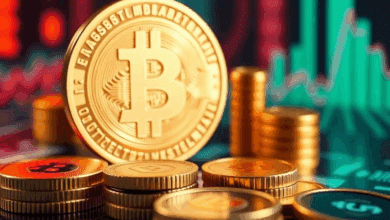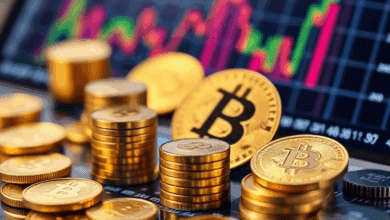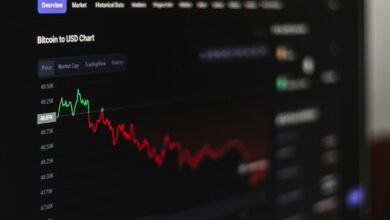Decentralized exchanges – peer-to-peer crypto trading

Utilizing automated market makers (AMM) like Uniswap significantly enhances liquidity provision by enabling continuous asset swaps without traditional order books. This model allows participants to engage directly, bypassing intermediaries and reducing counterparty risk while maintaining permissionless access to diverse token pools.
Platforms operating on smart contract protocols facilitate seamless asset swaps through algorithmic pricing, balancing supply and demand in real time. Such infrastructure supports efficient capital allocation, empowering users with full custody of their funds during transactions and eliminating reliance on centralized entities.
Analyzing recent volume metrics reveals substantial growth in decentralized platforms’ market share, driven by increased adoption of non-custodial solutions. Strategic integration of cross-chain bridges and layer-two scalability further optimizes throughput and lowers transaction costs, fostering deeper liquidity and broader participation across multiple networks.
Decentralized platforms: peer-to-peer crypto trading [Digital Finance digital-finance]
For efficient asset swaps without intermediaries, automated market makers (AMMs) provide a robust mechanism, enabling seamless liquidity provision through smart contract-driven pools. Platforms such as Uniswap leverage these pools to facilitate direct exchanges by users, eliminating the need for traditional order books and centralized custody. The liquidity depth within these pools directly impacts price stability and slippage during transactions, making capital allocation across diverse token pairs a critical factor for optimal performance.
Liquidity aggregators and AMM protocols are designed to foster continuous availability of funds in various token reserves, allowing market participants to execute swaps instantly at algorithmically determined prices. By distributing assets into paired pools – for example, ETH/USDT or DAI/USDC – these systems maintain balanced reserves that adapt dynamically according to trade volumes and pool ratios. This structure supports uninterrupted swapping capabilities while mitigating impermanent loss risks for liquidity providers.
Technical framework and operational dynamics
The core technology underpinning decentralized swapping platforms involves smart contracts automating pricing formulas based on liquidity pool ratios, typically following the constant product formula x * y = k, where x and y represent token quantities in the pool. This design incentivizes arbitrageurs to correct price discrepancies between on-chain pools and external markets, thereby aligning valuations efficiently. Unlike order book models prevalent in centralized venues, this method reduces latency and enhances accessibility by removing third-party dependencies.
Uniswap’s deployment exemplifies this approach with its multiversion evolution improving gas efficiency and integrating Layer 2 solutions to scale throughput. Its V3 iteration introduced concentrated liquidity positions allowing providers to allocate capital within specific price ranges instead of uniformly across the curve, significantly increasing capital efficiency while offering finer control over risk exposure. Such advancements highlight ongoing innovation aimed at optimizing user experience and maximizing returns under volatile market conditions.
Market participants must consider regulatory developments affecting compliance frameworks around permissionless swaps as jurisdictions evaluate anti-money laundering (AML) standards applicable to decentralized environments. While these protocols offer censorship resistance and enhanced privacy compared to centralized counterparts, evolving legislation may influence operational parameters or integration with fiat gateways. Strategic portfolio management should account for these factors alongside protocol-specific governance mechanisms shaping fee structures and upgrade paths.
Analyzing real-time data trends reveals increased adoption of cross-chain interoperability solutions enabling liquidity migration across multiple blockchains, expanding access beyond Ethereum-based ecosystems where early AMM pioneers like Uniswap dominate. Emerging platforms integrating layer 1 alternatives or sidechains introduce competitive dynamics that encourage diversification of liquidity sources. Investors aiming for sustained yield generation benefit from monitoring pool composition shifts alongside macroeconomic indicators impacting asset demand within decentralized swapping infrastructures.
How to Connect Wallets for Liquidity Pools and Automated Market Makers
Connecting your wallet is a foundational step for interacting with liquidity pools and AMM platforms, enabling secure asset management and seamless participation in decentralized liquidity provision. Wallet integration typically involves selecting a compatible wallet provider supporting standard protocols such as WalletConnect or injected web3 providers like MetaMask. Users should ensure their wallets are configured on the correct blockchain network corresponding to the targeted platform to avoid transaction failures.
Most liquidity aggregators and automated market makers prompt users to establish a connection by clicking a “Connect Wallet” button on their interface. This action triggers a signature request via the wallet application, which must be approved by the user. Upon successful authentication, the platform gains read-only access to wallet balances and permissions necessary for executing swaps or contributing tokens to liquidity pools without compromising private keys.
Technical Steps for Wallet Integration
The process begins with identifying supported wallet protocols on the desired platform. For instance, MetaMask injects an Ethereum-compatible provider into the browser environment, allowing direct interaction with smart contracts through Web3.js or Ethers.js libraries. Alternatively, WalletConnect facilitates mobile wallet connections via QR code scanning or deep linking, broadening accessibility beyond desktop browsers.
Once connected, users can authorize token allowances that enable smart contracts managing AMM pools to debit specific token amounts during transactions. It is critical to review allowance scopes carefully since excessive permissions could expose assets if exploited by malicious contracts. Advanced platforms incorporate modular permission designs limiting exposure while maintaining operational fluidity.
Real-world case studies demonstrate that wallets integrated with multi-chain support–such as Trust Wallet or Rainbow–offer enhanced flexibility when engaging with cross-chain liquidity pools and hybrid swap protocols. These wallets handle multiple token standards (ERC-20, BEP-20) and facilitate switching between networks dynamically without requiring disconnection or re-authentication, optimizing user experience within complex decentralized environments.
- Security Considerations: Always verify domain authenticity before connecting your wallet; phishing sites mimic legitimate interfaces aiming to capture private information.
- Transaction Fees: Gas costs vary significantly depending on network congestion; some platforms allow fee delegation or layer-2 scaling solutions integration.
- User Interface: Robust UI/UX design enhances clarity during wallet connection steps, reducing errors in selecting accounts or networks.
The interoperability of wallets with emerging protocol standards continues expanding functional boundaries for peer-to-peer asset exchanges and liquidity provisioning. Understanding these mechanisms empowers users to navigate complex decentralized financial systems confidently while mitigating common risks associated with unauthorized access or erroneous transactions.
Understanding Liquidity Pools
Liquidity pools represent a foundational mechanism for enabling asset swaps without relying on traditional order books. These pools aggregate user-provided tokens, allowing automated market makers (AMMs) to facilitate continuous asset exchange based on algorithmic pricing models. Platforms such as Uniswap utilize these pools to offer seamless token conversions, ensuring sufficient liquidity even in less active markets. This approach contrasts with conventional centralized platforms by eliminating intermediaries and enabling direct interactions between participants.
The core principle behind liquidity reservoirs is that contributors deposit pairs of assets into a smart contract, receiving liquidity provider (LP) tokens in return. These LP tokens represent their share of the pool and entitle holders to a portion of the fees generated during swaps. The AMM algorithm adjusts prices dynamically according to the ratio of deposited assets, maintaining balance within the pool while incentivizing liquidity provision through fee distribution. For example, Uniswap employs the constant product formula x * y = k to maintain equilibrium between paired tokens.
Analyses of liquidity aggregation reveal both benefits and risks inherent in this model. On one hand, it enables permissionless access to market making and enhances capital efficiency compared to order book structures. However, impermanent loss can affect providers when price divergence occurs between pooled assets. Empirical data from various AMM platforms indicate that strategic selection of trading pairs and timing significantly mitigate this risk. Additionally, evolving protocols are incorporating mechanisms like concentrated liquidity and dynamic fees to optimize returns and reduce exposure.
Comparative case studies demonstrate diverse implementations of liquidity frameworks beyond Uniswap’s model. Curve Finance, for instance, specializes in stablecoin pools that minimize slippage by targeting assets with similar valuations, whereas Balancer allows multi-asset pools with customizable weightings for increased flexibility. Market trends suggest growing adoption of hybrid models combining AMM efficiency with features traditionally found in order book systems, aiming to enhance user experience while addressing regulatory scrutiny and scalability challenges within decentralized finance ecosystems.
Executing Swap Transactions
To execute a token swap efficiently on an automated market maker (AMM) platform such as Uniswap, users must first connect their wallets and ensure sufficient liquidity for the desired trading pair. The core mechanism relies on liquidity pools composed of paired assets, allowing instant swaps without order books or intermediaries. Understanding slippage tolerance and gas fees is critical to optimizing transaction outcomes on these decentralized protocols.
Liquidity depth directly influences price impact during swaps; shallow pools cause significant slippage, leading to less favorable exchange rates. Platforms like Uniswap utilize constant product formulas (x * y = k) to maintain balance in pools, automatically adjusting prices based on trade size relative to total reserves. Traders should evaluate pool reserves and volume metrics before initiating transactions to minimize cost inefficiencies.
Technical Workflow of Swap Execution
Swap execution initiates with a smart contract call that specifies input tokens and desired output amounts. The AMM algorithm calculates optimal conversion rates using real-time liquidity data, deducting protocol fees typically ranging from 0.3%. Once confirmed by the blockchain network, the smart contract transfers tokens atomically–ensuring either full completion or rollback–thus maintaining transactional integrity without counterparty risk.
Gas optimization strategies are vital given fluctuating network congestion and fee volatility. Advanced users may employ batching techniques or leverage Layer 2 solutions to reduce costs while preserving decentralization attributes. Furthermore, understanding front-running risks caused by public mempool visibility prompts some platforms to implement measures like private transaction relays or time-weighted average price mechanisms.
The peer-to-peer nature of these platforms eliminates reliance on centralized custodians by enabling direct asset exchanges through trustless smart contracts. This design enhances security but necessitates user vigilance regarding wallet safety and contract authenticity. Integrations with hardware wallets and multisignature schemes offer added layers of protection against unauthorized access during swap operations.
Case studies examining high-volume swaps on Uniswap reveal that transactions exceeding 5% of pool liquidity often suffer drastic price impacts, emphasizing the necessity for strategic split orders or alternative routing through aggregators like 1inch or Matcha. These services optimize execution across multiple AMMs by sourcing best prices while managing gas expenditure.
Regulatory scrutiny increasingly focuses on transparency and anti-money laundering compliance within decentralized swap environments. While permissionless by design, integrating off-chain identity verification mechanisms may become standard practice in institutional contexts without compromising fundamental autonomy principles inherent in these systems.
Managing transaction fees
Optimizing expenses related to protocol interactions requires precise timing and awareness of network conditions. Utilizing automated market makers (AMMs) with high liquidity pools can significantly reduce slippage costs, indirectly lowering overall fee impact. For instance, executing swaps on networks with lower base gas prices or during off-peak hours often results in measurable savings, as empirical data from Ethereum Layer 2 solutions like Arbitrum indicate up to 70% reduction in transaction expenditures.
Fee structures vary widely across platforms that facilitate direct asset swaps without intermediaries. Some platforms implement dynamic fee models that adjust based on pool utilization and volatility metrics, incentivizing participants to provide deeper capital reserves and maintain tighter spreads. A case study of Uniswap V3 reveals that concentrated liquidity provisioning allows liquidity providers to target specific price ranges, effectively optimizing capital efficiency and diminishing unnecessary cost burdens for end-users.
Integrating cross-chain bridges introduces additional layers of complexity in managing operational costs due to varying consensus mechanisms and confirmation times. For example, transactions routed through Polygon’s sidechain often incur substantially lower charges compared to mainnet interactions while preserving security guarantees via checkpointing methods. Traders leveraging multi-pool arbitrage strategies must carefully evaluate cumulative fees against potential profit margins to sustain net positive outcomes.
Advanced users can benefit from batching multiple operations into a single transaction where protocols support such aggregations. This approach minimizes the number of state changes recorded on-chain, directly impacting computational resource consumption billed by validators. Platforms like 1inch aggregate orders across several liquidity sources, enabling the execution of complex swaps with a consolidated fee, which empirical analysis shows can reduce costs by up to 40% relative to isolated trades.
Emerging regulatory frameworks influencing gas pricing algorithms could affect future fee dynamics across these decentralized marketplaces. Continuous monitoring of updates from entities such as the Ethereum Foundation or EIP proposals is advised for stakeholders aiming to maintain efficient cost management strategies. Strategic adjustments based on these developments will be essential for maintaining competitive positioning within an increasingly fragmented ecosystem of liquidity protocols and order book alternatives.
Securing Private Keys: Strategic Imperatives for AMM and Liquidity Pool Participants
Adopting hardware wallets combined with multi-signature protocols remains the foremost defense against unauthorized access to private credentials, especially for users engaging with automated market makers like Uniswap or managing assets within liquidity aggregations. The integration of threshold signature schemes can mitigate single points of failure while maintaining seamless interaction with decentralized liquidity environments.
Smart contract wallets equipped with programmable security policies represent a pivotal advancement for safeguarding key material without compromising usability in non-custodial swap platforms and token distribution pools. This approach facilitates granular transaction controls aligned with evolving regulatory frameworks and operational risk management.
Future Outlook and Technical Considerations
- Cross-chain interoperability: As liquidity migrates across multiple blockchain ecosystems, private key management solutions must evolve to support secure multi-protocol authorization, reducing exposure during atomic swaps and inter-pool rebalancing.
- Decentralized custody alternatives: Emerging models leveraging distributed key generation (DKG) enable collective custody among trusted nodes, offering resilience against centralized attack vectors common in conventional wallet custodianship.
- Integration with Layer-2 scaling: Enhancements in rollups and sidechains necessitate adaptable key derivation hierarchies that preserve user sovereignty while optimizing transaction throughput on AMM platforms.
The interplay between enhanced cryptographic safeguards and increasingly complex liquidity structures underscores a critical pivot toward robust asset protection strategies tailored for non-custodial swap venues. The trajectory suggests that securing secret keys will become an integral component of protocol design rather than a user-side afterthought, ultimately impacting participant confidence and market depth across distributed token marketplaces.






